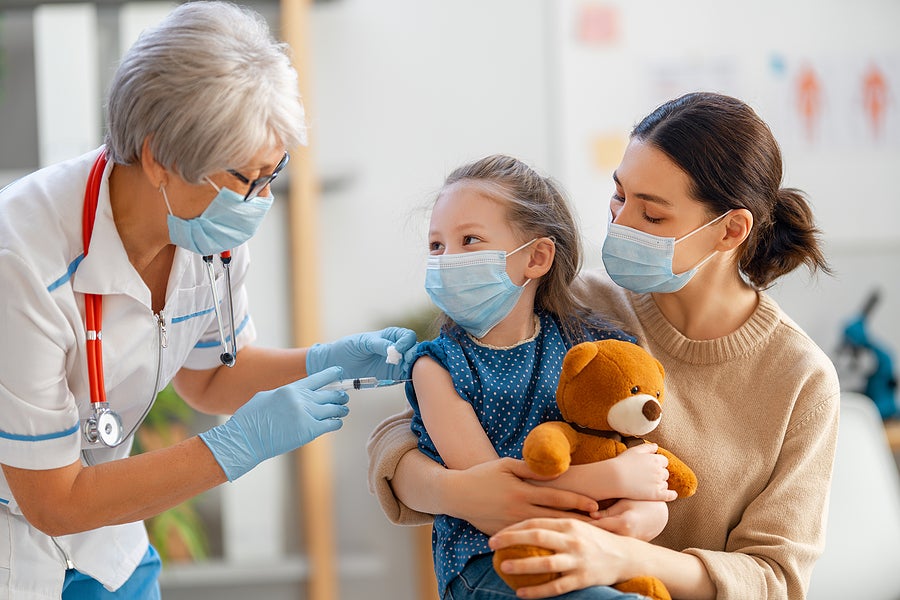In May 2021, the Centers for Disease Control and Prevention (CDC) reported that provider orders for non-influenza childhood vaccines through the Vaccines for Children (VFC) program had decreased by a total of about 11.7 million doses during the COVID-19 pandemic. These numbers are shockingly high, but likely underestimate the total number of missed doses. (The federally-funded VFC program pays for vaccines for around half of children in the U.S. so the reduction in orders does not encompass the likely reduction in vaccine orders experienced by other sources.) Unfortunately, a decrease in vaccination rates of this magnitude could result in fewer communities reaching herd immunity for preventable diseases such as measles, mumps and whooping cough.
In a new report released today with our partners at the American Academy of Pediatrics, Urgent Action Needed to Catch Up on Routine Childhood Immunizations, we break down the alarming decline in well-child visits and corresponding decline in routine childhood immunizations and identify some solutions to get back on track.
Pre-pandemic immunization rates showed an estimated 70.5% of young children were up-to-date on the recommended seven-vaccine series by age two, however, these rates varied by race and ethnicity, family income, and insurance status. Children who were least likely to be fully up-to-date include: Black, non-Hispanic children; children with family income below the poverty level; uninsured children; and children covered by Medicaid. Well-child visit data suggests that these disparities likely worsened during the pandemic, as low-income families and children of color were more likely to report missing well-child visits during the pandemic. Keeping up with well-child visits is a key component to keeping up with routine immunizations – during these visits, pediatricians remind parents about recommended vaccines and vaccination schedules and address any concerns parents may have before administering the vaccines.
It is urgent that children and adolescents catch up on missed vaccinations now to protect themselves and their communities before they return to school, camp, sports, and other in-person settings. Public education campaigns about the need to catch up and vaccine safety and efficacy, together with close coordination between state and local health departments, schools, and community-based partners, can help increase childhood vaccination rates quickly. At the federal level, improvements to VFC – such as expanding it to include children enrolled in separate CHIP programs – would help the program work more efficiently and reach additional children with vaccines at no cost to families. With these changes, the program could continue to narrow gaps in vaccination rates by race, ethnicity, family income, and insurance status.
To help spread the word to parents in your community, check out our social media toolkit with sample posts and graphics about the importance of catching up on routine childhood immunizations before an outbreak of a preventable disease such as measles, mumps, or whooping cough.


